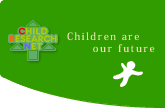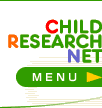|
1. Favorite Subjects
In Beijing more than 80% of students likeEsubjects such as National LanguageEand MathEwhile in other cities between 50 and 70% of students likeEthose subjects. In all cities the percentage of students who responded that they likeEPhysical EducationEis high, indicating a general preference for practical subjects among students.
* Subjects taken at elementary school level vary between country and city. For the purpose of this study subjects listed in the question were established in line with the actual situation in each city. Consequently while some subjects are studied in all cities, others are only studied in certain cities. In certain cases subjects taken and the content of each subject vary among schools even in the same city.
Tokyo
Chart 1-1 Timetable at an elementary school in Tokyo (Grade 5)
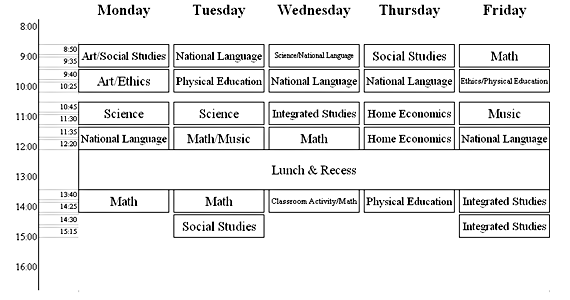
Enlarge
*1: Subjects in time slots indicating more than one subject are taught on alternate weeks.
*2: Certain subjects and times have been abbreviated.
Graph 1-1 Favorite subject (Tokyo)
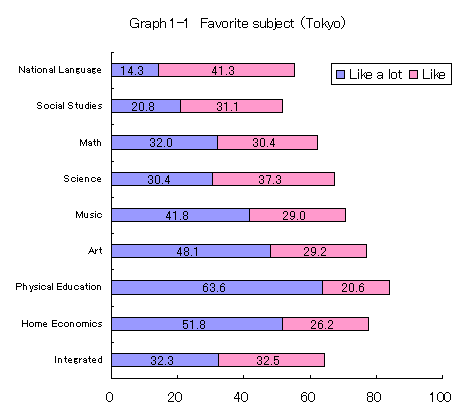
The most popular subject that was liked (like a lotE+ likeE by more than 80% of students is Physical Education.EThe next most popular subject is Home EconomicsE(78.0%), followed by ArtE(77.3%), and MusicE(70.8%), indicating a preference for practical subjects. Among other subjects ScienceEand MathEare popular, each being liked by more than 60% of students. In contrast, the percentages of students who likeEhumanities subjects are fairly low and only 51.9% of students claim to like Social Studies.E
Seoul
Chart 1-2 Timetable at an elementary school in Seoul (Grade 5)
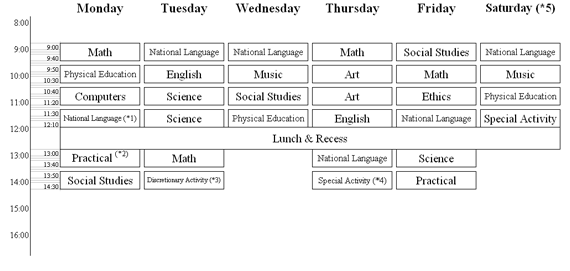
Enlarge
*1: National LanguageEincludes reading,Espeaking, listening and writing.Ebr>
*2: PracticalEis the equivalent of Japans Technology and Home Economics.Ebr>
*3: Discretionary ActivityEis undertaken at the schools own discretion. Many schools use this time to teach information education, Chinese classics (Chinese characters), foreign languages, environmental education, reading etc.
*4: Class meetings etc are held during Special ActivityE
*5: Classes are held on alternate Saturdays.
Graph 1-2 Favorite subject (Seoul)
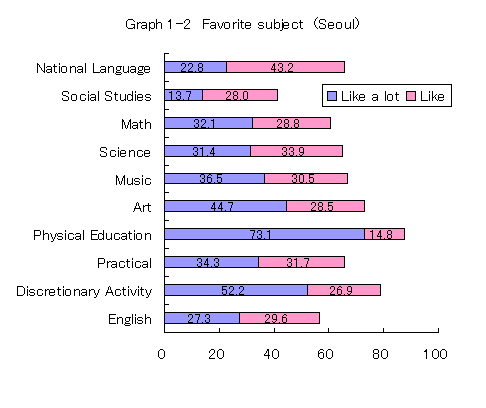
Just under 90% of elementary school students responded that they likeE(like a lotE+ likeE Physical EducationEindicating a remarkable popularity for the subject. The next most popular subjects are Discretionary ActivityE(79.1%), ArtE(73.2%), and MusicE(67.0%), indicating a preference for practical subjects, which is the tendency shared with Tokyo. The least popular subject is Social StudiesE(41.7%), while EnglishE(56.9%), a subject introduced in the 1990s, is unpopular in comparison to other subjects.
Beijing
Chart 1-3 Timetable at an elementary school in Beijing (Grade 5)
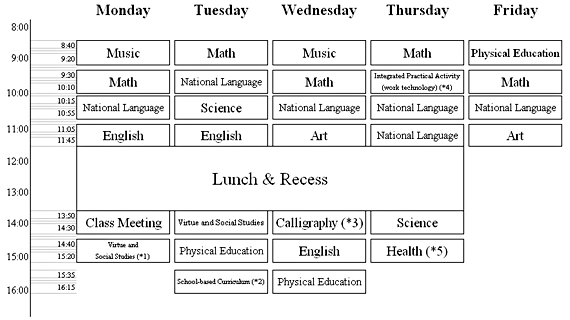
Enlarge
*1: VirtueEis the equivalent of EthicsEin Japan.
*2: School-based CurriculumEis a course unique to each school.
*3: CalligraphyErefers to copying out letters with a pencil (or a pen). While the board of education permits the use of either pencils or writing, this particular school has chosen to use pencils.
*4: At this school, Work TechnologyEis taught as a part of Integrated Practical ActivityE(similar to Integrated StudiesEin Japan).
*5: HealthEis a subject designed to teach students to understand the changes occurring in their bodies in accordance with their age.
Graph 1-3 Favorite subjects (Beijing)
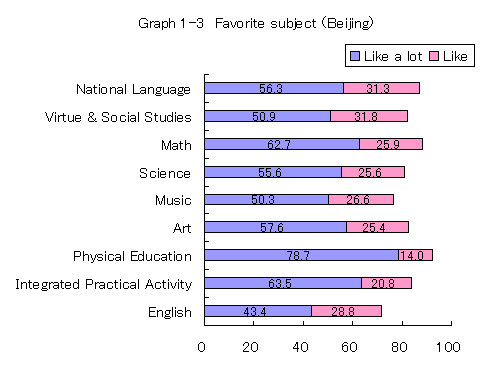
In Beijing the percentage of students who responded likeE(like a lotE+ likeE overall is notably high. The majority of responses for almost all subjects was like a lot.EWhile the most popular subject is Physical EducationE(92.7%), more than 80% of students responded that they likeEsubjects such as National LanguageE(87.6%), Virtue and Social StudiesE(82.7%), MathE(88.6%), and ScienceE(81.2%).
Helsinki
Chart 1-4 Timetable at an Elementary School in Helsinki (Grade 4) (*1)
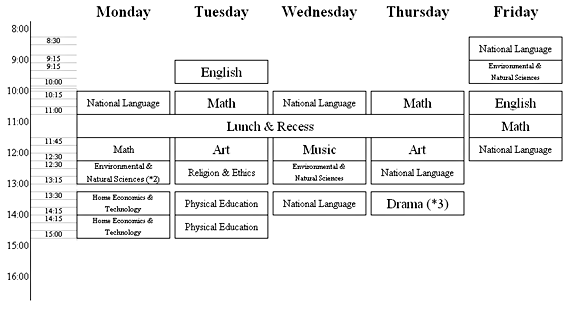
Enlarge
*1: In Finland grade four is the equivalent of grade five in Japan (10-11 years old).
*2: Environmental & Natural StudiesEis a general subject incorporating environment, geography, biology, physics and chemistry.
*3: DramaEis an educational activity at most schools and parents are invited to watch performances once to a few times a year.
*4: History,Eincluded in social studies, is a subject from grade five onwards.
Graph 1-4 Favorite subject (Helsinki)
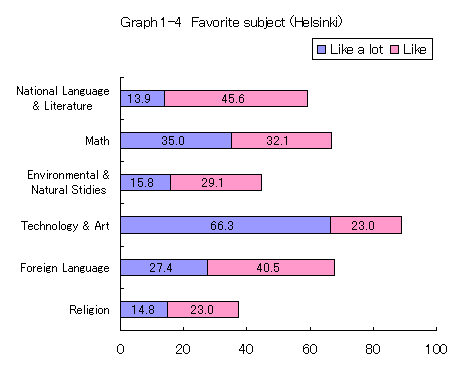
*: Technology & ArtEincludes art, music, crafts (home economics and technology), and physical education. The curriculum in Finland is highly flexible and the survey referred to Technology & ArtEdue to there being many cases in which multiple practical subjects are integrated and taught together.
Technology & ArtEreceived the most likeE(like a lotE+ likeE responses (89.3%). The breakdown in preference for each practical subject is unclear as the survey lumped practical subjects together; however it is clear that practical subjects are popular in Helsinki. The next most popular subjects are Foreign Languages,Esuch as English and German (67.9%) and MathE(67.1%). Just under 60% of students responded that they likeENational Language and LiteratureE(59.5%).
London
Chart 1-5 Timetable at an elementary school in London (Grade 6) (*1)
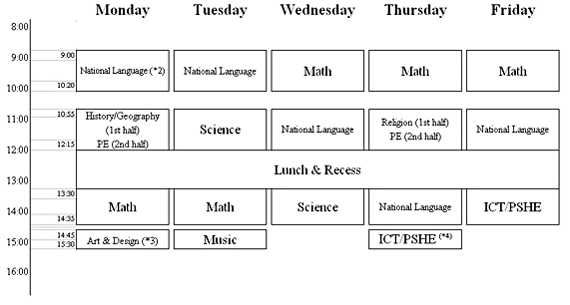
Enlarge
*1: In the UK grade six is the equivalent of grade five in Japan (10-11 years old).
*2: National languageEincludes literacy, writing, and reading.
*3: This time slot is divided into two. Art & DesignEis taught in the first half of the class and Design & TechnologyEis taught in the second half of the class.
*4: PSHEEis short for Personal, Social and Health Education and includes drug education, citizenship education, and sex education. However the amount of time, content and way in which such classes are taught are left up to the discretion of individual schools.
*5: One hour is considered a long period of time. Some periods are divided into two, and two subjects are taught. History/GeographyEand ICT/PSHEEare taught on alternate weeks.
Graph 1-5 Favorite subject (London)
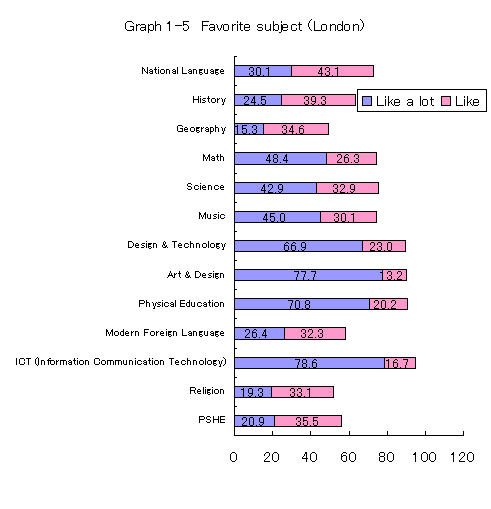
*: Percentages for Religious StudiesEand Modern Foreign LanguageEare calculated based on subgroups excluding the response not takenE(864 students and 538 students from the sample respectively). The government had once announced that Modern Foreign LanguageEwould begin to be taught at all elementary schools by 2010 but this policy has been abandoned. Some schools had already started teaching Modern Foreign LanguageEwhen the policy had been announced and chose to keep the classes. As a result many students responded not takenEto this survey.
More than 90% of students responded likeE(like a lotE+ likeE for ICT (information communication technology)E(95.3%), Physical EducationE(91.0%), and Art & DesignE(90.9%), indicating such subjects are preferred by almost all elementary school students. Three out of four students responded that they likeENational LanguageE(73.2%), MathE(74.7%), and ScienceE(75.8%). In comparison, the percentage of likeEresponses for social science subjects such as HistoryE(63.8%) and GeographyE(49.9%) was slightly low.
Washington, D.C.
Chart 1-6 Timetable at an Elementary School in Washington, D.C. (Grade 5)
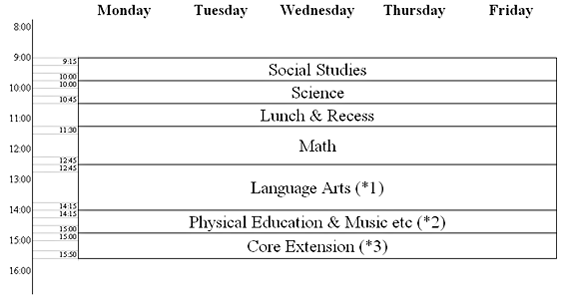
Enlarge
*1: Language ArtsEis the equivalent of National LanguageEin Japan and comprehensively involves the teaching of listening, speaking, reading and writingEskills.
*2: Physical Education & Music etcEclasses are referred to as EncoreEand depending on the day, art, physical education, computers, music and library room (mainly reading and research) are taught during this time slot.
*3: Core ExtensionEinvolves the teaching of a subject configured as an emphasis for a particular period of time (usually a week) for each grade.
*4: Different from other cities, in principle time is allocated each day in this way from Monday to Friday. Unique to this system is that the length of one period varies depending on the subject being taught.
Graph 1-6 Favorite subject (Washington, D.C.)
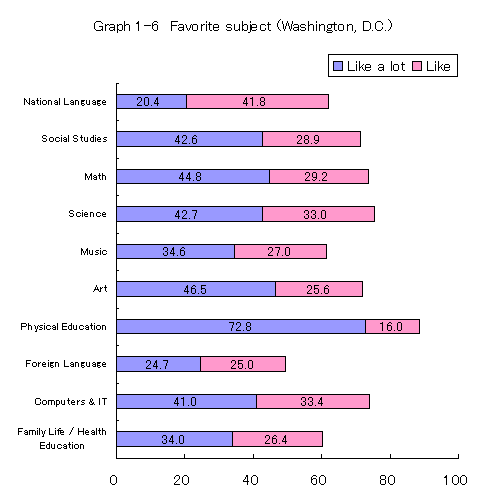
*1: Percentages for Music,EArt,EPhysical Education,EForeign Languages,EComputers / IT,Eand Family Life / Health EducationEare calculated based on the subgroups excluding the response not takenE(945 students, 949 students, 930 students, 304 students, 884 students, 444 students from the sample respectively).
*2: The way in which subjects are taught varies among schools in Washington, D.C. For example, certain schools include Computers / ITEin each subject while other have made Computers / ITEinto a separate subject in itself. Further, the inclusion of Foreign LanguagesE(predominantly French and Spanish) and Family Life / Health EducationEvaries among schools.
The percentage of students who responded likeE(like a lotE+ likeE for scientific subjects such as ScienceE(75.7%) and MathE(74.0%) is relatively high, while the percentages for National LanguageE(62.2%) and Foreign LanguagesE(49.7%) are fairly low. Also in Washington, D.C., Physical EducationEis the most popular subject among elementary school students (88.8%)
|
